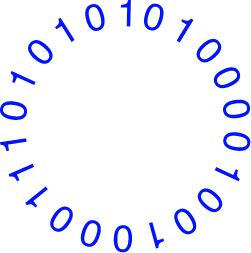BGV Partner Yash shares his perspective on MVC –
Last week I wrote a post on my observations around my observations at @Arka Venture Labs. I got a few requests to expand on this topic of “MVC”. So, I have tried to share my approach here.
Each company is different and it is hard to provide generic advice. It is hard to get it right, but the goal is to arrive at a ballpark figure that is close enough to manage and simple enough to iterate…
I am attempting to formalize this concept into a quick snippet; you could be in one of the following three types of companies (or your company can go through these phases over time), and it is important to ask 3 questions in each:
1. Long lead time to market with R&D driven: a company (or stage) which needs a lot of R&D work before the product can be introduced. Important to understand: What does success look like: a working prototype which can demonstrate 10x improvement in 1-2 KPIs in a controlled setting. Resources needed to get there: Need X developers working full time over Y period. For AI/ML companies, size and cost of acquiring the right data set. (No sales necessary IMO since it will be primarily founder led and too early to hire an enterprise sales person). Timeframe needed to achieve this: M months of development, followed by N months of testing
2. Land small sized contracts with a MSP (Minimum sellable product) and expand features: a company (or stage) where you can get to market with a small feature set, and upsell to larger packages or “seats”. What does success look like: get “C” customers to land at “P” ARR/year. Need to show the metrics around sales velocity and efficiency. May be better to have some numbers around net retention. Resources: smaller number of developers than #1, but need more sales reps and customer success folks. Note that it takes a while to train the sales reps to get to the same productivity as founders. Timeframe: you have to probably showcase 10’s of customers being able to purchase your product with minimal selling effort (affects your CAC).
3. Enterprise grade contracts with some pilots and co-innovating with customers: a company where contract sizes (ACV and TCVs) are huge, but market has long sales cycles. What does success look like: 1-2 large accounts that can validate your claims (reference marquee customers) in true business setting and can talk to investors. Important to ensure these engagements aren’t just “personal and professional favors.” Resources: you need hands-on customer success along with development team for rapid sprints. You will be learning with the customer, don’t recommend hiring “enterprise sales” reps early in the cycle. Initial pipeline and closures best done by founders. Timeframe: It takes at least a year from start to getting to a meaningful progress in large ACV accounts. Ensure you have time.
It will take time to iterate on this MVC model. Once you figure out where you are in your company building process, and have answered the critical questions around “what does success look like”, “what resources you need” and “timeframe you need to get there”, figure out where you have the most risk and try some scenarios where things don’t work out the way you expected it to (lower accuracy than expected, longer time to acquire data, longer sales cycle, lower price points etc). Entrepreneurs are, by default, optimistic people and hence, don’t pay enough attention to this aspect. Such modeling of realistic scenarios will give you an idea of the capital buffer you need to have. (Remember, you will have to start fundraising at least 3 months before your cash out.) This gives you the MVC. Figure out who are the best investors to help you get to the milestones and bring those investors onboard and avoid optimize for just the dilution aspect. Otherwise, you are left with no help and not enough capital to get to the next stage… probably worse situation than taking that initial dilution.
Now, some myths:
A) there is a one size fits all model – each company is different, each phase in the company will be different, you need to build answer that is right for YOU
B) you need to build an elaborate model to know your MVC – simple math is probably better and easier to digest
C) you will get this right the first time – you will need inputs from people who have done this before and you need to iterate fast
D) Any type of revenue is good revenue – investors will discount certain revenues streams that are not in the core areas (from different customer segments, from professional services, NRE etc.)
